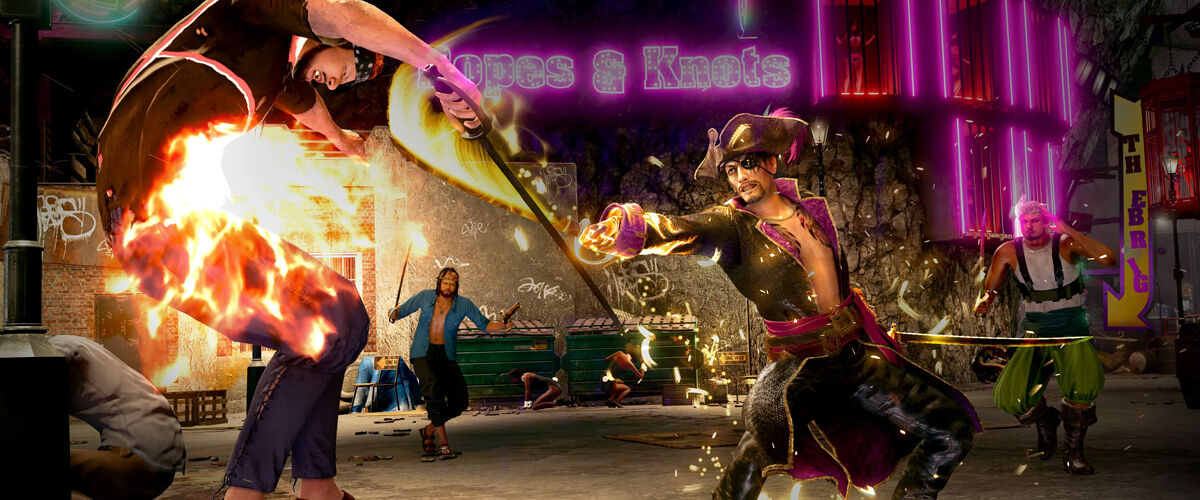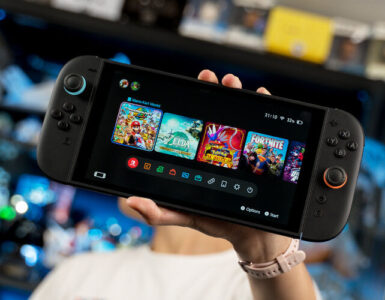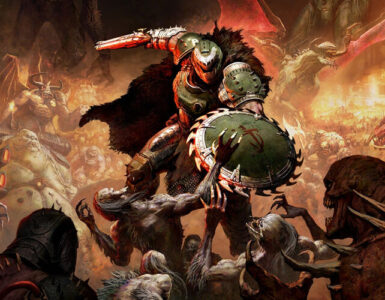In the world of Ryu Ga Gotoku (RGG) Studios’ Yakuza / Like a Dragon series, Majima Goro is known to be many things, as the beloved fan favourite is the Mad Dog of Shimano, the One-Eyed Demon, the Patron Saint of Pain, and more all in the same breath, steadily racking up popularity over the years as comic relief. Leading protagonist Kiryu Kazuma may have stolen the hearts of longtime fans but Majima has secured their loyalty, cultivating unparalleled and unforgettable charm despite his few-and-far-between playable outings.
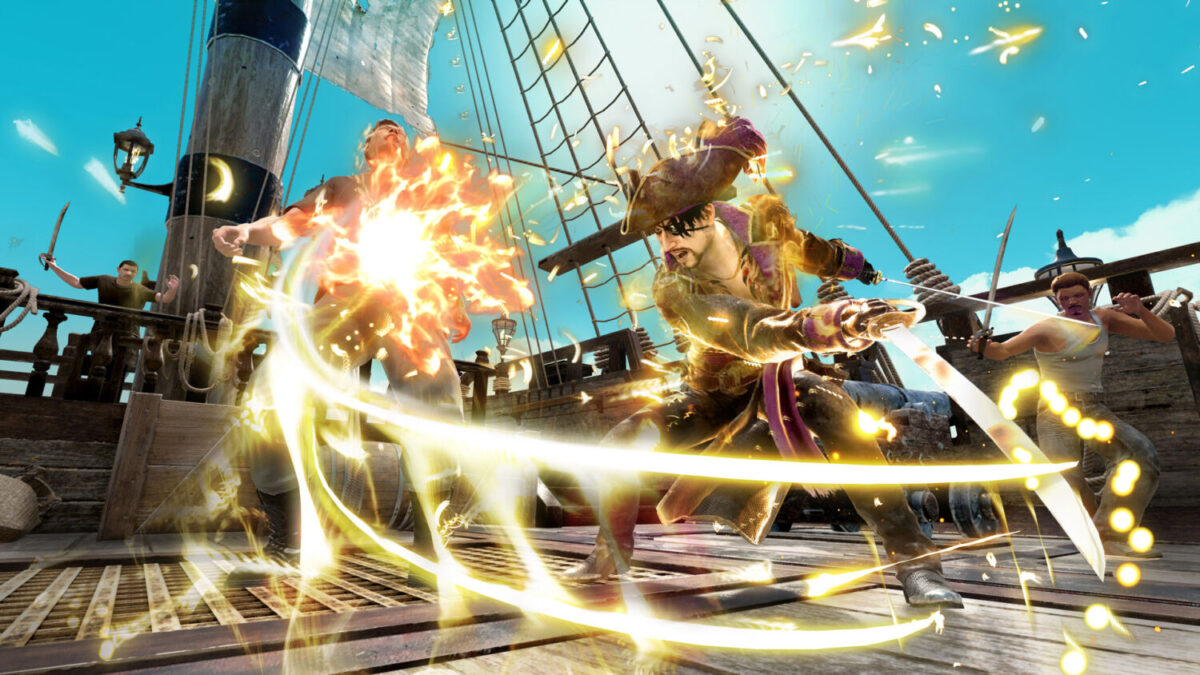
Until Like a Dragon: Pirate Yakuza in Hawaii sailed along, that is. Marking a renewed love letter to the former yakuza patriarch, it places him back in the spotlight after his last leading role in 2011’s Yakuza: Dead Souls, and in a first for the series, focuses an entire narrative around him. This time, Majima embraces a persona that fits his eyepatch-wearing look and flamboyant personality perfectly – a pirate captain, who leads his own crew on a quest to uncover a hidden, valuable treasure.
For franchise veterans, the identity shift comes as no surprise. The swashbuckling fantasy is the latest in a string of off-the-wall endeavours, from turn-based gameplay and a historical samurai tale to a spy thriller, promising a lively, engaging time at sea and on dry land. It’s a highly enjoyable callback to the series’ action roots, introducing fresh elements built on formula hallmarks without sacrificing the endearing quirkiness and over-the-top absurdity its titles are known for. There are some cracks in the armour, stemming from tradition and going into uncharted territory, although they do little to detract from an overall scintillating affair.
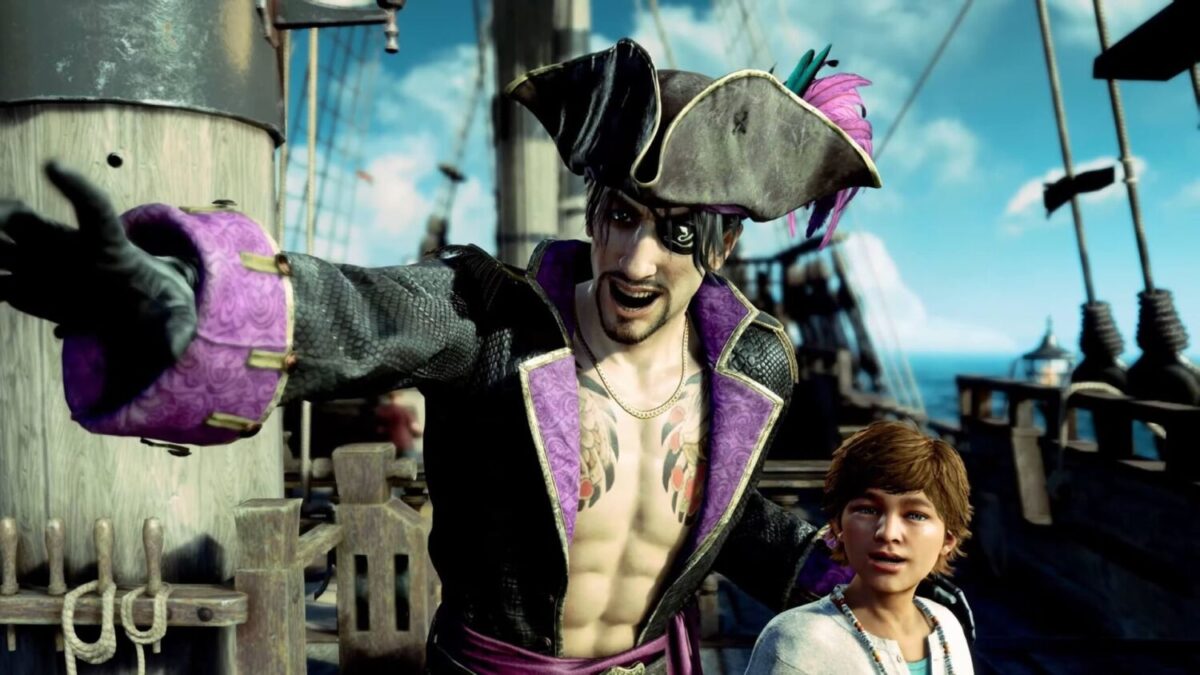
Taking place after 2024’s Like a Dragon: Infinite Wealth, this standalone, action-heavy expansion wastes no time in establishing its setting through a dramatic narrative by Majima, who sits on a plush, purple-cushioned throne in the present timeline. Here’s how it starts – after washing up on the shores of a remote island, an amnesiac Majima befriends a young boy called Noah Rich and his adorable tiger cub, Goro (yes, as in his surname), and finds himself embroiled in a new conflict involving both local Hawaii pirates and ex-yakuza members from Japan. Together, he sets out to gather a crew and commandeer a ship in search of the Esperanza, an ancient vessel rumoured to hold precious treasure and recover his lost memories.
Even without getting into the meat of things, it’s clear the buccaneer angle works only because the Mad Dog of Shimano, and not Kiryu or any other major character, is behind the wheel. While his wild, unhinged energy isn’t as prominent as before, he still oozes playful wit and a devilish sense of mischief that feels right at home with the laissez-faire, brazen seafaring spirit here. The effect wouldn’t feel the same with Kiryu’s severe demeanour or mainline Like a Dragon protagonist Ichiban Kasuga’s earnest personality; the bright spark also carries over to character interactions, allowing for lively moments or banter between him and various colourful individuals.
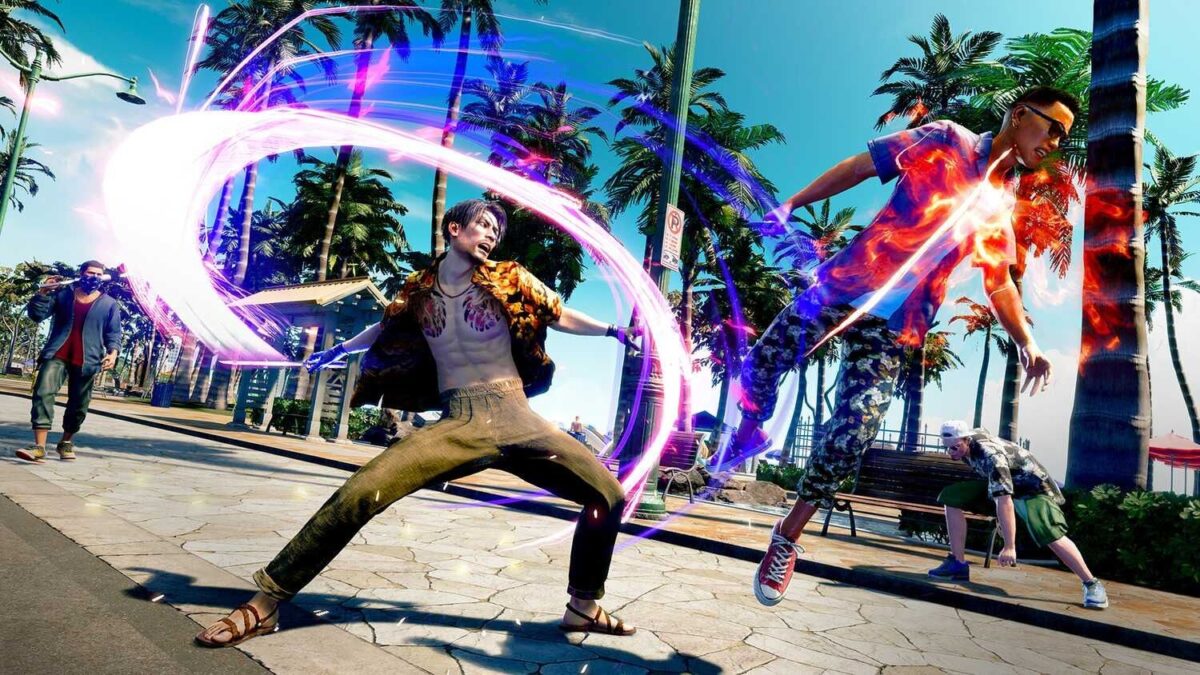
Occasionally, these instances casually bring up Majima’s age, and it’s easy to forget just how long he’s been around. Like a Dragon: Pirate Yakuza in Hawaii makes it a point to remind players (and enemies about to eat their words) that he’s a spry 60-year-old who never lost his edge in brawling, be it on the streets or ashore. The Thug, Breaker, and Slugger fighting stances are no more, but the flashy kinetic influence still makes itself known through two new styles: the default Mad Dog, and the highly adaptive Sea Dog. Like before, Majima’s specialisation in speed makes him more agile and nimble-footed than Kiryu, with the former revisiting the thrill of chaining punches, kicks, and knife strokes.
The combo attacks are familiar territory for fans of the Like a Dragon experience before 2020’s Yakuza: Like a Dragon, except there’s now a bonus aerial element. Opponents can be launched upwards and juggled mid-air, while a leap and air-dodge manoeuvre offers a quick getaway from attacks, especially from firearms. The versatility brings a satisfying rush in a way that wasn’t present previously, complementing Majima’s fluid and dynamic movements. At full charge, the Madness Gauge summons doppelgangers when activated, proving handy in a pinch – even if it can be difficult to track the action on-screen at times.
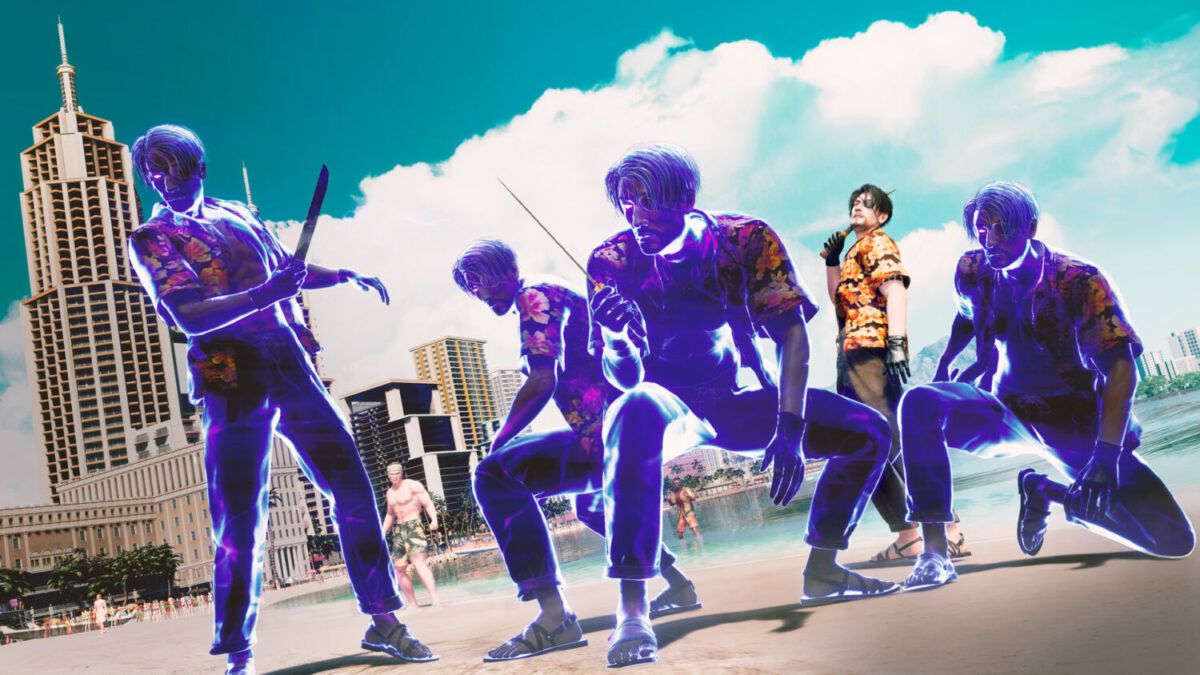
The Sea Dog stance plays out differently. Featuring a pirate theme, it delivers a more well-rounded alternative by equipping him with a cutlass boomerang, thrown to deal damage from a distance, a flintlock pistol, which doles out extra devastation when charged up, and a chain hook that latches onto enemies and slings Majima towards them. In place of a sidestep, blocking acts as the primary source of defence, with the option to learn a perfect guard later.
There’s a distinct difference in feel between both fighting stances, each establishing their own brand of appeal: Mad Dog is snappy, more akin to an acrobatic dance, whereas the other has a stronger bite to its blows. The Madness Gauge ability for Sea Dog swaps out clones for powerful dark deities, unleashed with treasures known as Dark Instruments, and brings different perks and effects to the battlefield.
Sticking to a familiar tried-and-tested system, Like a Dragon: Pirate Yakuza in Hawaii lets players upgrade existing and passive skills or learn new techniques for both fighting stances, general utility, and Heat combinations. Heat Actions, as veterans would know, are special moves that trigger under certain conditions and unleash brutal attacks on their enemies, represented through a short animated scene.
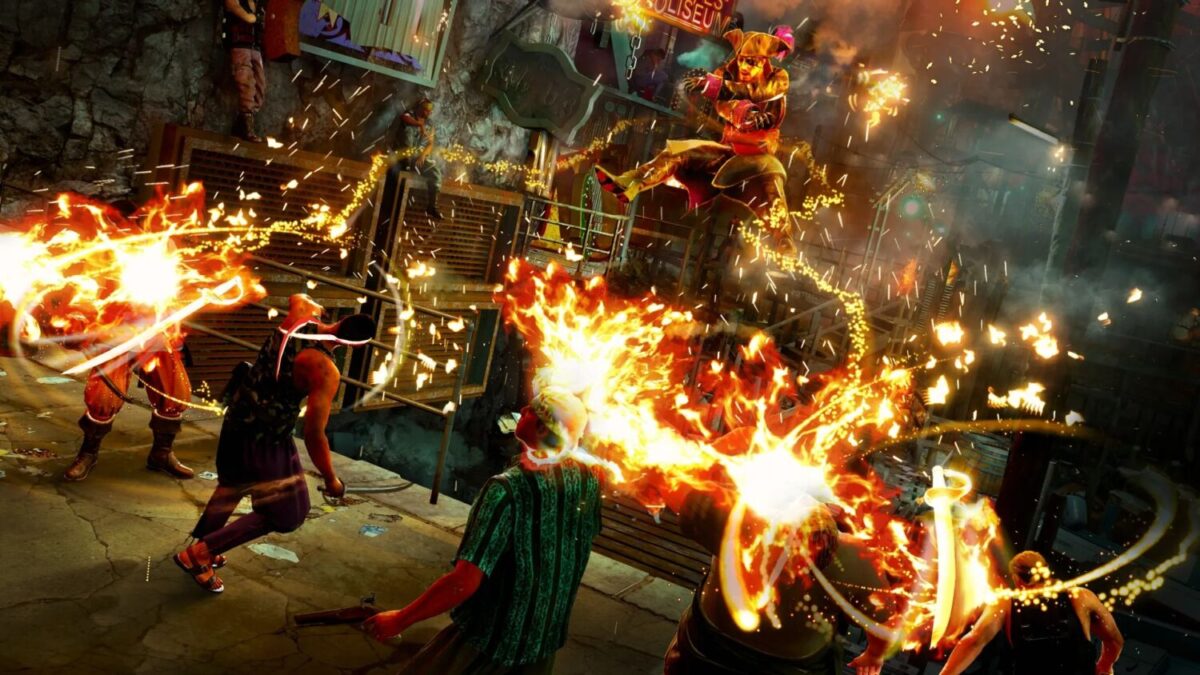
Alas, the system continues to show signs of antiquity. Similar to the other action-heavy Like a Dragon titles, the prompt button appears too quickly with a narrow window to react, making it easy to miss. The finicky pop-up timing can become a minor source of frustration when overwhelmed by foes or during more challenging fights, exacerbated by the occasional lag of button inputs. To avoid confrontation, the traditional method of entering and exiting stores, initiating cutscenes or engaging in activities like cooking and mini-games still works, and area exploration is sometimes gated behind specific story beats.
On the note of navigation, players will mainly drop anchor at four major locations – Rich Island, Honolulu, Nele Island, and Madlantis – as they sail the seas. Majima’s latest outing marks the first time that nautical elements are available in the franchise, starting with the ability to fully steer and commandeer the main ship, Goromaru. There’s a noticeable heft to it, and the controls are fairly straightforward with basic joystick movement, speed boosts (which come in limited stacks and can be upgraded), and drifting.
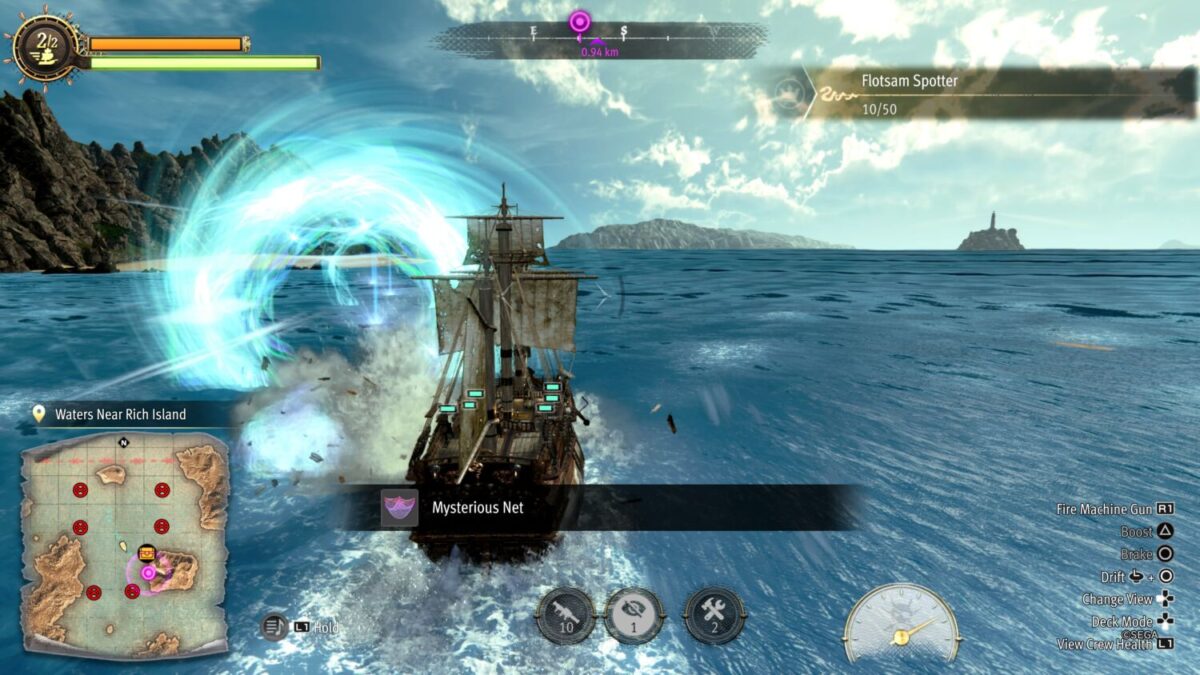
Traversal is well put together, albeit a little stiff and agonisingly slow when not boosted, such that going from one location to another can feel like a drag. The high seas don’t offer as much freedom as expected, divided into smaller zones to fast-travel between instead of a seamless world map, but prove to be a refreshing change in pace. The shifting weather conditions spice things up further, introducing extra threats in the form of heavy snowfall, powerful whirlpools, active volcanoes, and more. At times, dolphins or other marine creatures show up, and someone onboard (usually Noah) would comment on it, which brings a nice little touch to crew dynamics.
Most of the excitement lies in naval combat and treasure-hunting expeditions, however. Like a Dragon: Pirate Yakuza in Hawaii is rife with hostile encounters, and players can get in on the action by attacking with a front-facing machine gun, ramming straight into an enemy’s hull, and firing artillery from their port or starboard cannons for more damage. If the Goromaru takes too many hits, there’s the option to begin repairs, which have a limited count and will render all weapons unavailable temporarily.
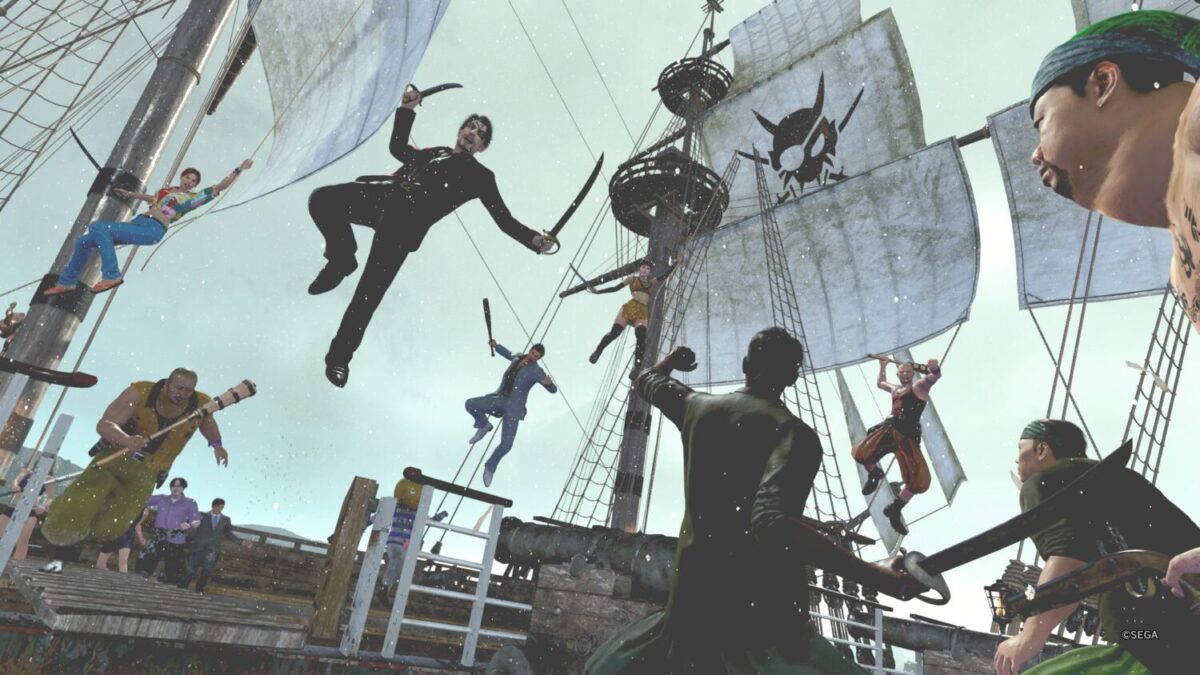
After the enemy vessel is defeated, it’s time for a takeover. Deck Battles form the latter part of the open-water combat loop, pitting Majima’s crew against a staggering number of foes that range anywhere from low 10s to over 40. Hectic they may be, these skirmishes are chaotic fun at its best and invite some strategic planning – each individual crewmate has a letter ranking in the areas of attack and defence, alongside a special team leader ability for some, so it’s vital to play to their strengths.
The same goes for the party responsible for naval warfare. Assigning an ill-equipped member to the cannons results in slower repairs and reduced proficiency, and it’s worse if they specialise in Deck Battles, as that means inefficient manpower allocation. Only one boarding formation is available at the start of the game, but players will be able to unlock more slots for a price, increasing their pool of fighters and hands on deck. Likewise, weapon load-outs can be customised and swapped out, including lasers, freeze guns, and flamethrowers, in addition to passive upgrades like more repair or speed boost stacks.
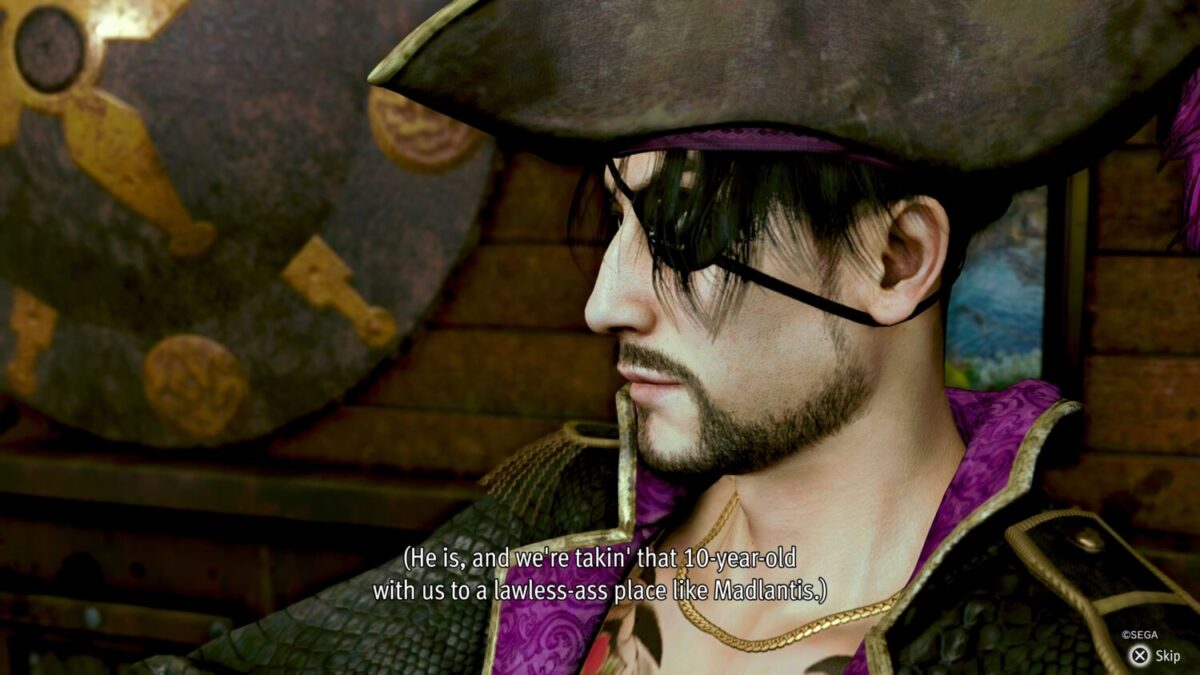
The two-part combat experience delivers a fun time, even if the loop gets repetitive after a while. Some features also don’t seem quite unnecessary, such as the ability to fire a rocket launcher on deck and use smoke screens to buy time or obscure the enemy’s line of vision, because the ship’s artillery already packs enough wallop. For a change in scenery, the Pirates’ Coliseum in Madlantis promises more high-octane action, featuring ship battles with a variety of different rules, from one-to-one matches to free-for-alls against nine other crews.
In Majima’s pursuit to become the king of pirates, it’s always important to build a reputation. Like a Dragon: Pirate Yakuza in Hawaii sets aside islands for players to unearth hidden riches, with the Treasury of Treasures revealing hints about their locations. Up to four crewmates can accompany Majima on this mini-quest, but there’s a catch – no items or food can be used, as inventory access is disabled. Failure will also result in a loss of crew morale, which, fortunately, has an easy fix. To raise their spirits, players can offer them gifts or throw a party for everyone.
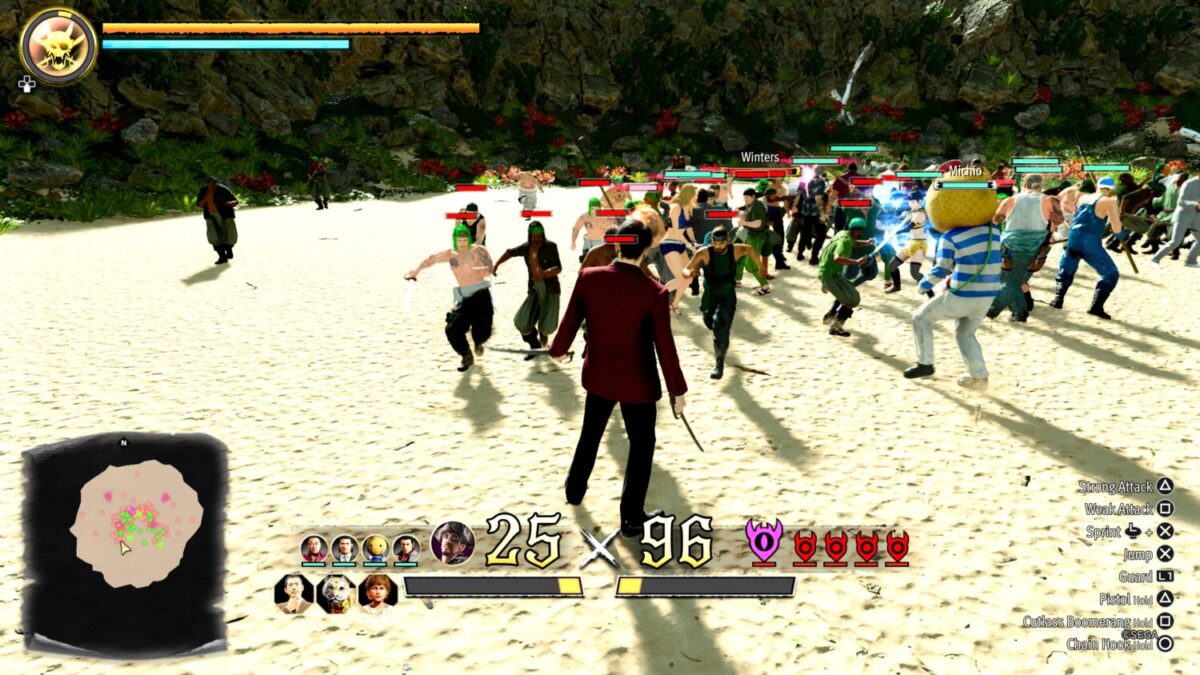
On dry land, Honolulu serves as the central hub of activity. Following its debut in Like a Dragon: Infinite Wealth, the sunny island returns with plenty of new distractions against a near-identical backdrop. Past elements like Revolve Bar and Aloha Links, a social media app that challenges players to befriend as many individuals as possible, and segway riding are back, and thankfully so, as if the map isn’t big enough, Pirate Yakuza in Hawaii introduces the ability to scale heights using Majima’s chain hook. Bounty targets can be tracked down and defeated for a quick cash fix, while tamed animals are transferred to a small farm on Rich Island.
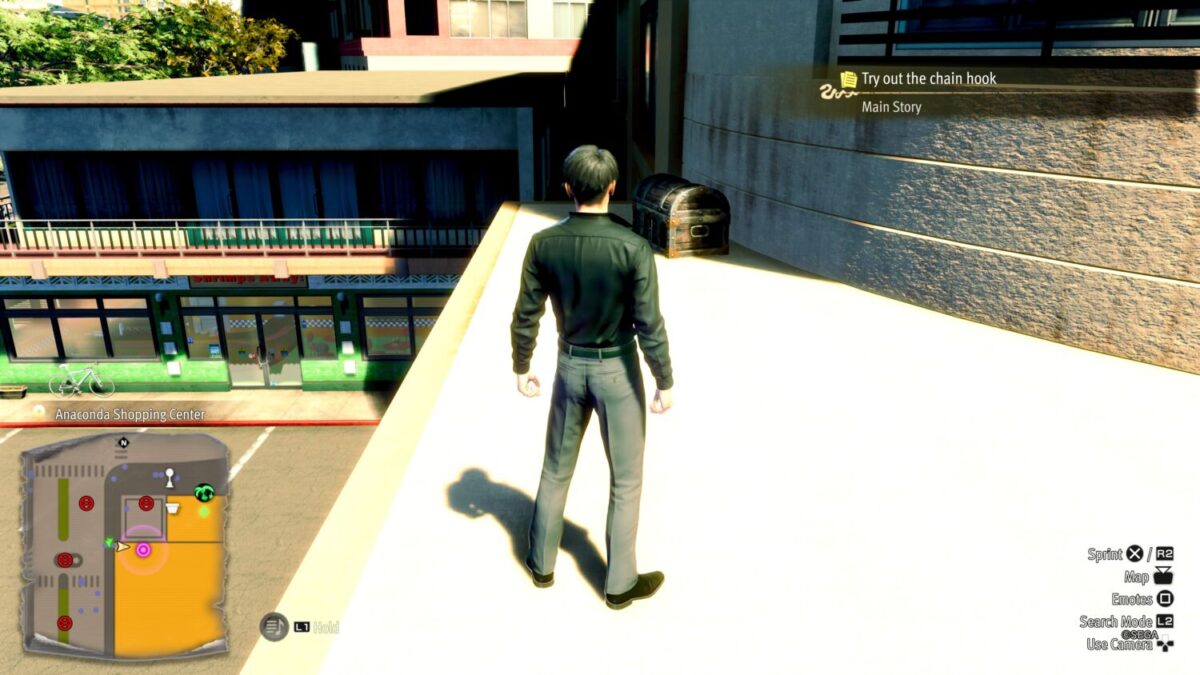
Because Honolulu is full of buzz, it presents the opportunity to meet many different types of individuals, including recruitable crew members with various prerequisites, ranging from straightforward ones like reputation level to specific requests such as wearing kabuki face paint or owning 10 CDs. Completing side stories is the alternative, adding more colourful personalities to an already eclectic bunch.
As expected, the side stories continue to deliver in Like a Dragon: Pirate Yakuza in Hawaii. True to the series’ signature over-the-top flair, their nature can run from one end of absurdity to the other of wholesome, with answering quizzes and taking photographs of objects or places of interest setting the standard for mundanity. In one instance, Majima goes mano-a-mano against a polar bear while other times, he lets an ageing businessman realise his boyhood fantasies of becoming a pirate, helps bring a former female seafarer and her love interest together, and rekindles the lost friendship between two street performers.
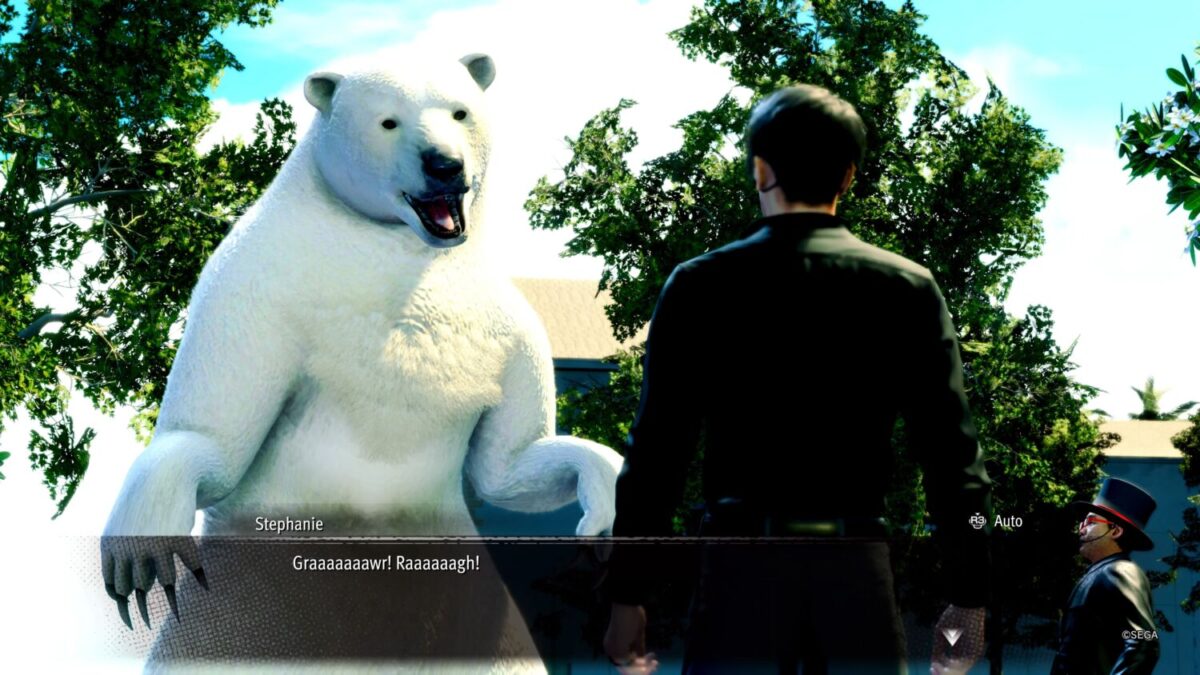
These endeavours are joined by a host of mini-games and activities led by Infinite Wealth’s Super Crazy Delivery and Sicko Snap, Dragon Kart from Yakuza: Like a Dragon, and a beloved series staple – karaoke, where Majima’s screeching vocals make a welcome return. Over at Madlantis, Bang! Bang! Batting, which swaps out standard baseballs for cannonballs, proves to be a ball of a time, but otherwise, players can also cook, harvest plants, and play shogi, poker, and blackjack, among others, in their downtime. Like before, the scale of Honolulu does leave behind some map clutter and bloat, but it’s easy to ignore and doesn’t hamper the fun in any way.
While the sheer volume isn’t unique to the game, the slightly outdated graphics powered by RGG Studios’ Dragon Engine are. The franchise has never been particularly concerned about visual fidelity, and there’s nothing wrong with that, except it seems to be a step down from Infinite Wealth on the PS5, with age showing in cutscenes, close-up character animation, and details like the overly-bright glare of the sun that happens in random bursts.
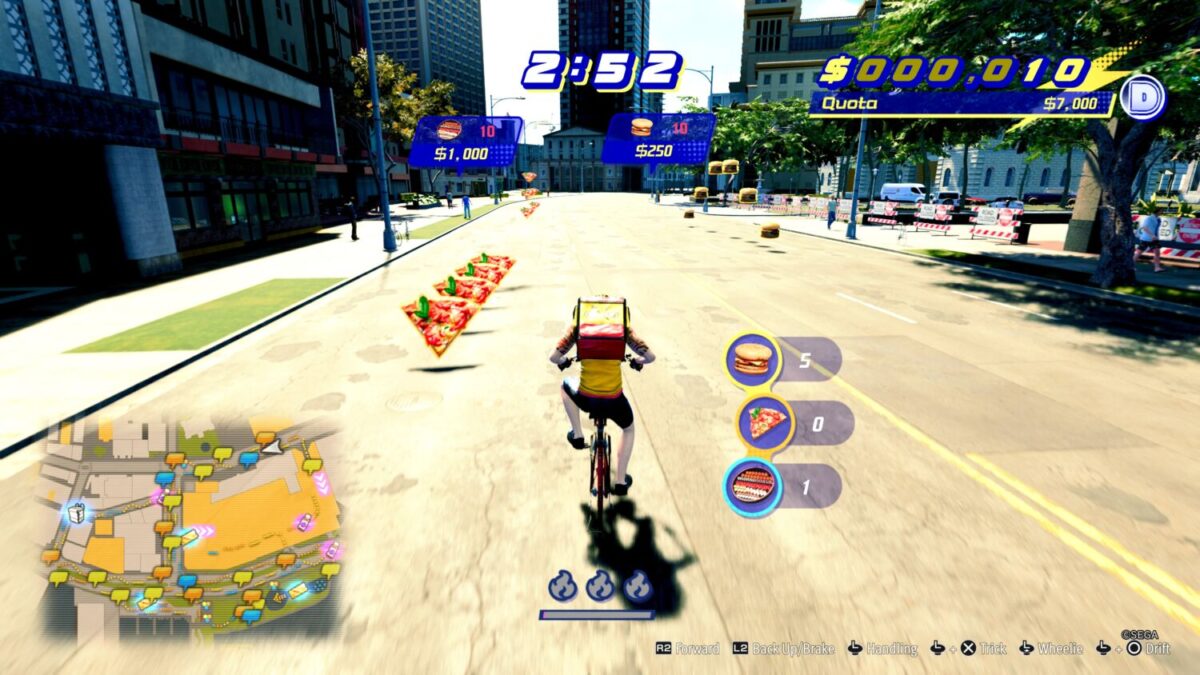
Still, fortune favours the bold, and Like a Dragon: Pirate Yakuza in Hawaii boasts plenty of that, literally and otherwise. A Majima-centric adventure has been a long time coming, so it’s great that his first solo affair, and the franchise’s debut pirate fantasy, proves to be well worth the risk. It’s sun-drenched enjoyment and spills and thrills in one package, furnished with versatile combat, goofy liveliness, and a wealth of bonus content celebrating the best of the beloved character – charm, flaws, all.
Welcome back, the Mad Dog of Shimano.
GEEK REVIEW SCORE
Summary
More than just Majima fan service, Like a Dragon: Pirate Yakuza in Hawaii is a delightful jaunt that promises time-sinking fun in spades – be it at sea or on land. This seafaring ambition is a charming love letter to a persistent fan favourite, with a neat blend of familiar and new elements to satisfy returning and newcomers alike.
Overall
8.2/10-
Story - 7.5/10
7.5/10
-
Gameplay - 8.5/10
8.5/10
-
Presentation - 8/10
8/10
-
Value - 8.5/10
8.5/10
-
Geek Satisfaction - 8.5/10
8.5/10

